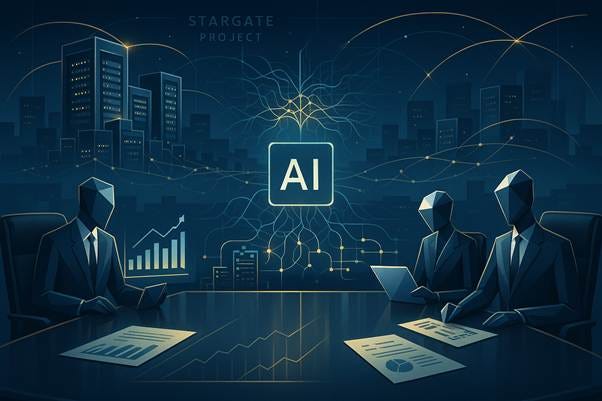Executive Summary
During the course of the week, major advancements were made in the AI infrastructure with OpenAI expanding its Stargate project through partnerships with Oracle and SoftBank, setting off a race for compute scale not seen before that could completely change enterprise AI capabilities.
In addition, agentic AI was identified as a key trend, and while report after report highlighted agentic AI’s possible ability to automate complex workflows and rearrange organizational structures, most pilots continue to fail to deliver because of the difficulty of integration.
All of this indicates that executives will need to prioritize scalable AI if they want to foster growth, while still managing risks of job losses and regulation.
Strategic Analysis
The week’s headline development was OpenAI’s expansion of the Stargate project, a collaborative effort with Oracle and SoftBank to build $500 billion worth of AI-optimized data centres by 2030. This initiative aims to create hyperscale facilities capable of supporting next-generation AI models, addressing the growing bottleneck of computational resources.
For companies, this implies faster access to next-generation AI tools, potentially lowering their cloud-based training and inference costs by around 40% in the future, presuming continued infrastructure investments (as has occurred in previous periods). However, it also increases competition for energy and microchips, exposing new supply chain risks. Leaders in verticals such as finance and healthcare should be prepared for an even greater AI adoption gap in our industry if they do not have an established partnership with these companies.
Complementing this, agentic AI systems that autonomously execute multi-step tasks, gained traction through reports from Bain & Company and McKinsey, emphasizing its role in flattening hierarchies and boosting productivity. Bain’s Technology Report highlights how leading firms are using agentic AI to extend competitive edges, such as automating market analysis or customer service, leading to 3x higher efficiency in mature implementations. Yet, an MIT study revealed that 95% of generative AI pilots fail to scale, often due to poor data integration and overhyped expectations. A practical implementation framework includes:
Assess workflow maturity using a scoring model (e.g., rate processes on automation readiness from 1-10);
Pilot with contained scopes, like agentic tools for procurement decisions;
Measure ROI via metrics such as task completion time reduction and error rates.
Businesses ignoring this risk falling behind, as agentic AI could disrupt traditional roles, with Forrester noting executive concerns over regulation and integration as top hurdles.
Action Items
Conduct an internal audit of your AI infrastructure needs:
Review current compute dependencies and explore partnerships with providers like Oracle to secure access to Stargate-like resources, aiming to complete this within two weeks to inform Q4 budgeting.Launch a small-scale agentic AI pilot:
Select one high-impact workflow (e.g., supply chain forecasting) and deploy an open-source agent framework like LangChain, tracking metrics such as productivity gains over a 30-day trial.Upskill leadership on AI literacy:
Schedule a C-suite workshop using resources from Bain’s report to align on agentic AI strategies, focusing on ethical integration to mitigate job displacement risks.
Executive Insight
During my CEO tenure and leading digital transformations for organizations, I can see how the overhype of AI could derail initiatives, just as many companies had invested in cloud adoption (in its early phases) without a clear path to ROI, only to see projects languish.
The Stargate expansion reminds me of those key infrastructure bets that set winners apart from laggards; executives need to take the same approach to AI. AI needs to be ingrained into discussions at the board level, or else we are at risk of falling into the 95% failure rate with pilots.
The true challenge is not how you apply this new technology such that your human expertise in some ways amplifies the AI you are deploying, turning potential disruptions into sustainable advantages.


